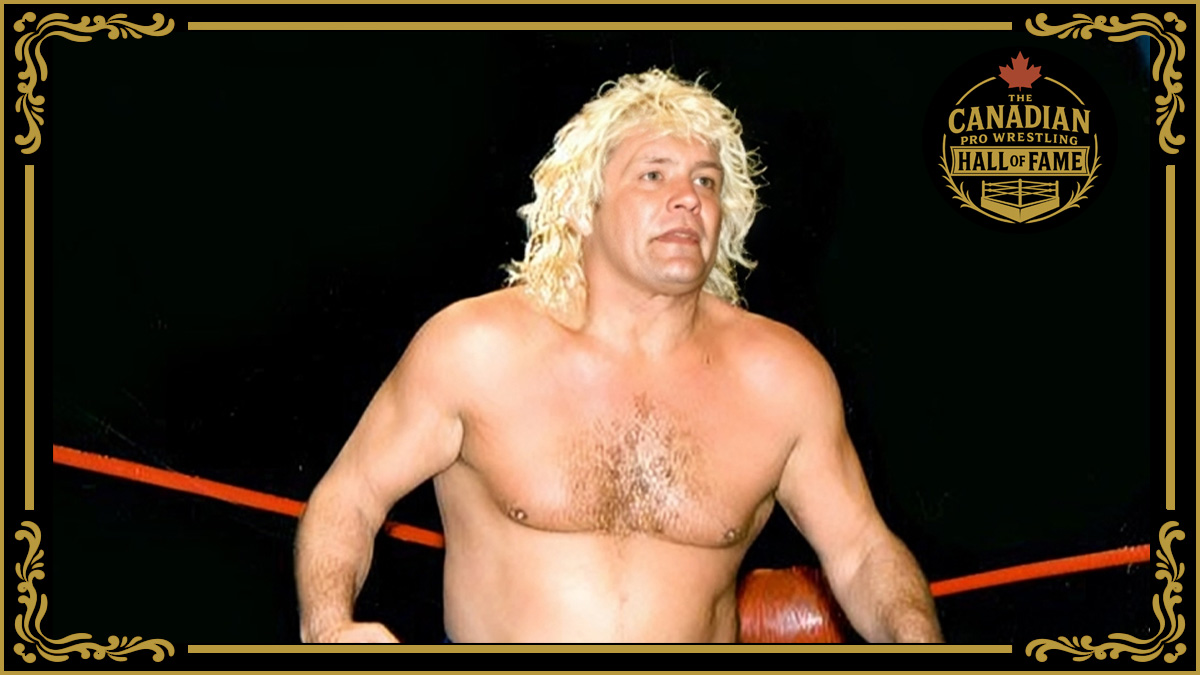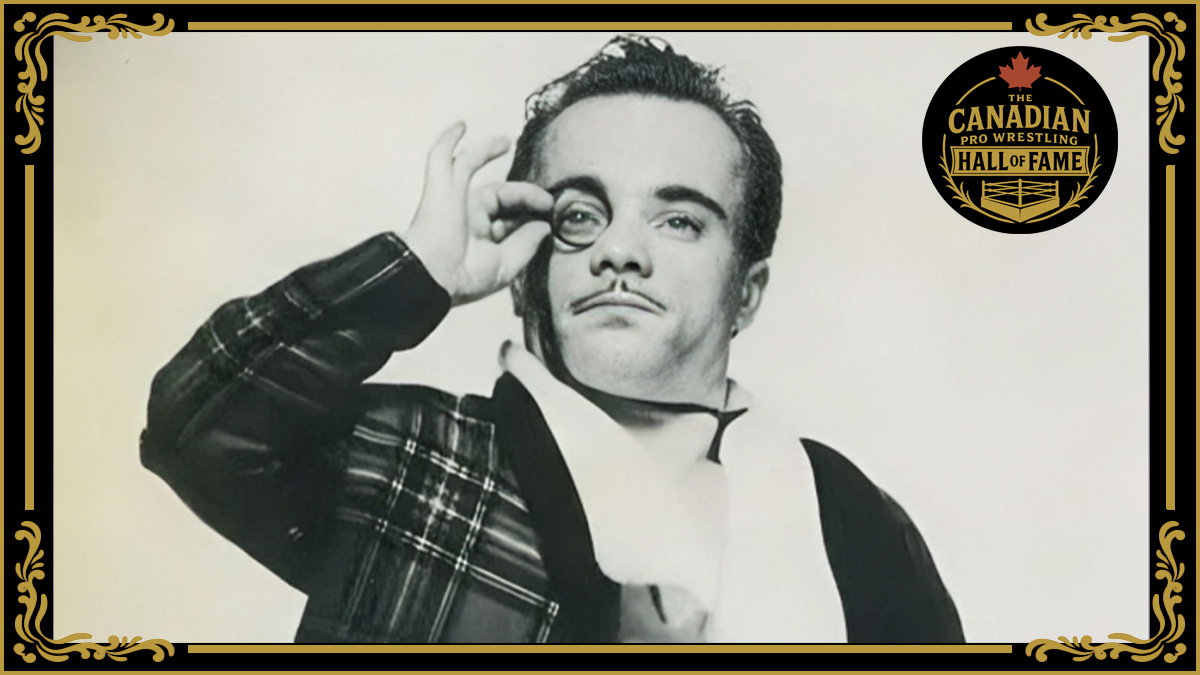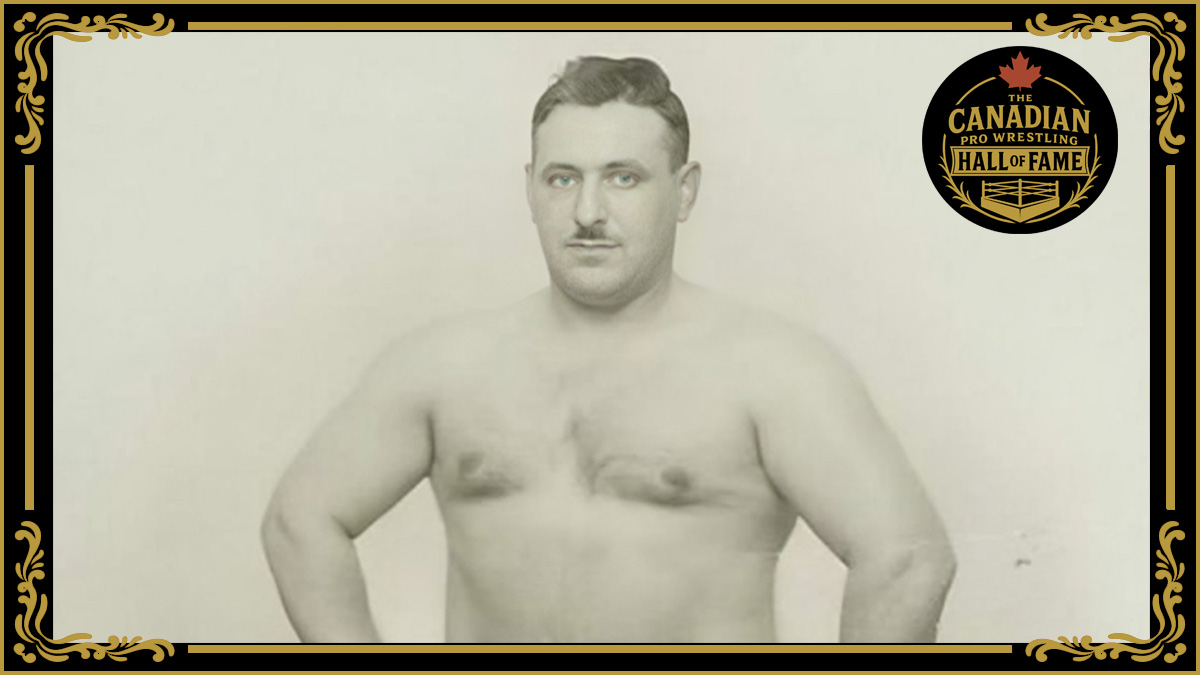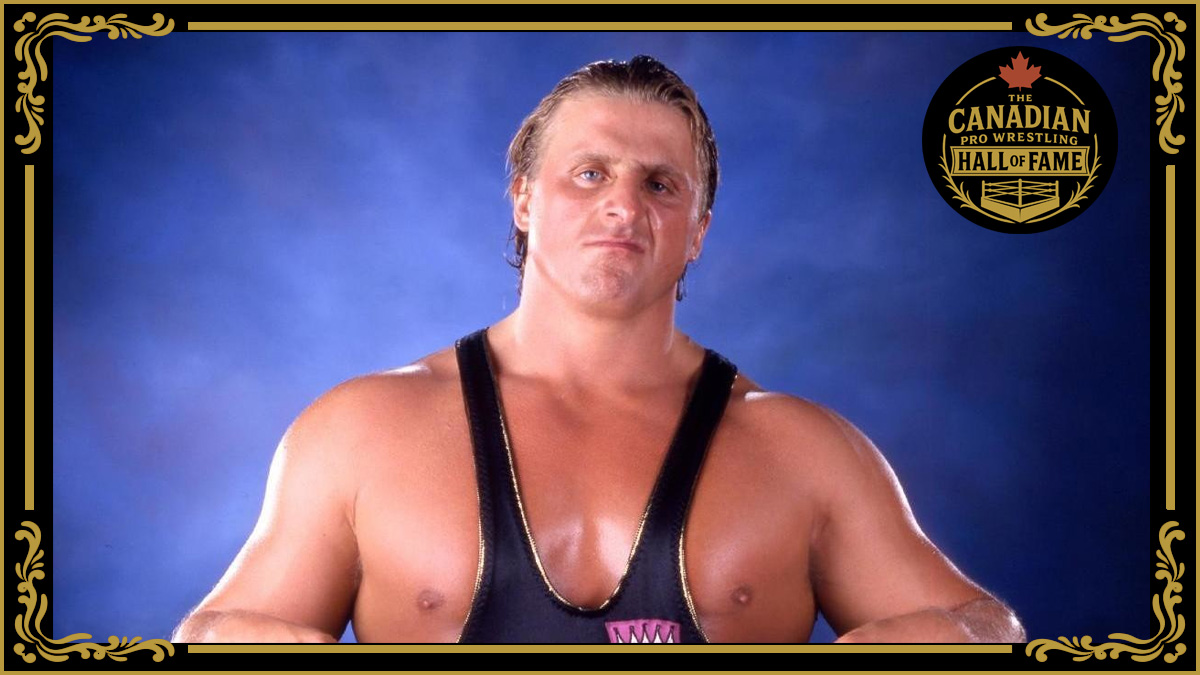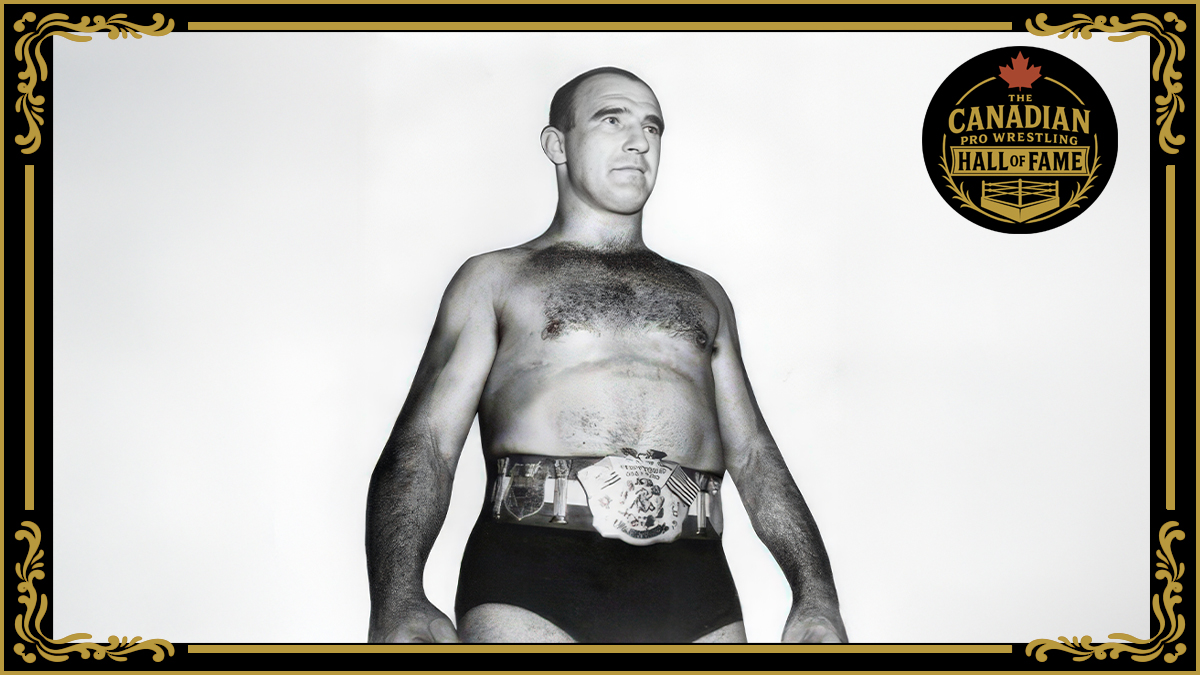Buddy Roberts has it more difficult than most to stay in touch with his old friends.
Surgery to combat throat cancer 14 years ago left him with a hole in his throat, and a distinctive, hoarse voice that tires easily. He even went a year and a half without talking.
“Now that I can talk, I don’t want to talk. It’s really strange. But when I hear my good friends calling, it kicks me in gear, and I say, ‘What am I doing?'” Roberts recently told SLAM! Wrestling from his home outside Chicago.
In a few weeks, he’ll be able to see a bunch of his colleagues in person at the NWA Wrestling Legends Fanfest Weekend, August 5-8, in Charlotte, NC. Roberts will be reuniting the Hollywood Blonds tag team with partner Jerry Brown and manager Sir Oliver Humperdink.
“I love seeing my old friends,” said Roberts. “I can’t wait.”
Roberts has been a regular on the fan fest circuit over the last few years, but this is the first time out for Brown, who only recently resurfaced after years in the “Where are the now?” files.
The former Fabulous Freebird worked in construction until diagnosed with throat cancer. He is now on disability insurance, struggling in particular with back pain. His wife is employed in a good job with the United States Postal Service.
“Life gets a little bit boring when you retire and your wife works. It’s boring. It’s gone from one extreme to the other, from the wrestling world to being an at-home dad,” he said. Now, their son is working as Buddy Roberts Jr. for Windy City Wrestling, around Chicago. “He’s wrestling now because his father did,” admitted Dad.
He looks back on his career with a sense of awe, wonder and a desire to do it all again.
Growing up in Vancouver, B.C., Dale Hey was a bodybuilder, winning a bench press contest when he was just 17 years old. He was a wrestling fan, and Don Leo Jonathan and Gene Kiniski were particular favourites.
Hey befriended a wrestler named Red McNulty, who would gain greater fame later as Ivan Koloff. McNulty started showing Hey the ropes and, in 1967, managed to get the rookie booked into Stu Hart’s Stampede Wrestling promotion.
It nearly ended the wrestling dream for Hey.
“I stayed there three weeks and starved to death, had two matches, three matches a week, paid $50. I lived in his basement. And in his basement, he had like a torture chamber. At times, Stu Hart’s father was actually sleeping with me down on a mat in the basement. It was absolutely crazy,” recalled Roberts.
After three weeks, he bailed, returning to Vancouver, dreams dashed. But then McNulty came through again. This time, he was working for the Rougeaus in Montreal and convinced the promoters to bring in his buddy.
“They actually used me real good in the beginning. I was up in the semi-main event and everything. So I had kind of a nice start. I was a babyface,” he said, referring to his early days as Dale Roberts, “a high-flying drop-kicker.”
In 1970, he went to his first U.S. territory, the AWA, for Verne Gagne. (He would become a U.S. citizen in 1974, helped by the fact that his mother was American.) In the AWA, he worked as Buddy Smith, an opening card carpenter, who helped set up and tear down the ring.
One of the other newcomers paying his dues was Bob Windham, the future Blackjack Mulligan. “Bob was just breaking in, and basically I was too. We were both doing jobs. We’d drive around together on these l-o-o-o-n-n-g trips together, heck, all the way up to Winnipeg. We became pretty good friends on the traveling end of it. I remember they booked us against each other and he wanted to be a heel, and so did I. We had two matches against each other, and I let him be the heel in the first match, and I was the heel in the second match. That was funny because we were both fighting to see who was going to be the heel.”
A couple of key contacts were made in the AWA, though Hey was only there four or five months, living in a hotel on Hennepin Avenue. One was a young man named Red Sutton, who carried ring jackets and helped out; he would later become a manager as Sir Oliver Humperdink. The other was “Cowboy” Bill Watts, a headliner who was just getting into promoting.
“Bill Watts gave me my first break,” said Roberts. Watts had seen him in St. Louis, and asked Gagne to release him.
“He told me he was putting a new territory together down in Oklahoma, Leroy McGuirk, Mid-South Wrestling. He got me down there. He dyed my hair blond and he got me to change my name to Buddy Roberts. He teamed me up with Jerry Brown as the Hollywood Blonds,” Roberts said.
“I brought him here as Dale Hey. He was doing jobs for Verne when I started in the promotion here,” recalled Watts. “I brought him in as Dale Hey. Then Jack Donovan broke his ankle and I put Buddy in there and created the Hollywood Blonds.”
That pairing lasted seven years, 1970 to 1977. Ironically, the Fabulous Freebirds of Michael Hayes, Terry Gordy and Buddy Roberts would last seven years as well, from 1980 to 1987, and it was Watts that inserted Roberts into the ‘Birds, making them probably the most famous trio in wrestling history.
Though the Blonds were successful prior to bringing on a manager, Humperdink added a whole new element.
“Humperdink was a good talker,” said Roberts. “He stood out. Mr. Humperdink stood out in a crowd. The outfits that he wore were outrageous, if you remember the hat and the jacket. He did stand out. … The crowd really didn’t like him. It just made it easier. We didn’t want to be just a tag team, we wanted to be one with a manager.””The first night I managed the Blondes in Quebec City, we won the Grand Prix tag championship from the Vachon brothers,” remembered Humperdink. “I got a little carried away and got involved in the outcome. To make a long story short, the Commission there suspended me and I was only allowed to go to the ring for introductions and then had to go back to the dressing room when the match started. Suspended the first night, that’s got to be a record!”
When the Blonds dissolved, Roberts got a chance to work with one of the legends of the wrestling business.
“I met Johnny Valentine in Charlotte, and he made me an offer. He was going to be booking down in Florida,” Roberts said. “When I split up with Jerry Brown, he wanted me to come down and work for him, until he could bring me to Texas.”
Valentine wanted a protege. After his plane crash, he couldn’t wrestle any longer, but thought there was still value to his name. Therefore Dale Valentine was born.
It was a special time, said Roberts, adding that it was “quite an honour for me, to be with a legend like Johnny Valentine.”
Aside from the in-ring action, they paired up for a bar and restaurant in San Antonio. Valentine’s wife was the cook, and the wrestlers were there to help when they could. But Roberts couldn’t remember the bar’s name: “He didn’t take advantage of his name in wrestling, which he should have.”
Roberts admitted being Dale Valentine “was a strange feeling,” especially since Valentine’s son, Greg, had begun his wrestling career, beginning as Baby Face Nelson, then as Johnny Fargo, Johnny Valentine, Jr., until settling on Greg Valentine.
“Me and Greg were real tight for about four years. Wherever I went or wherever he went, we ended up together living next door to each other. We were really tight friends,” Roberts said.
Johnny Valentine and Roberts parted amicably as the 1980s began. Roberts found himself back in Oklahoma, working out and a little at loose ends.
Then Watts came along again.
“When I spotted Gordy, I wanted Gordy and I didn’t really want Michael. But you couldn’t get Gordy without Michael,” explained Watts. “Michael wanted to work in the ring, but he was the shits in the ring, so I ended up putting Buddy Roberts with them. That’s when the thing gelled. Michael is phenomenal, and I enjoy Michael, but Michael to me is always ass-backwards in the ring, but he loved being in there. But as far as the actual work as a team, he was not a great worker. Gordy could carry it. But when you had him in there with Buddy Roberts with Michael managing, you had instantaneous chemistry.”
Few would disagree. The three Fabulous Freebirds are among the greatest teams in history, and their epic feud with the Von Erichs made them international stars.
Roberts recalled the early days of the team, admitting he had never heard of the Gordy/Hayes pairing that had already been successful in Georgia — and that he wasn’t familiar with the Lynyrd Skynyrd song, “Freebird” either.
“My plane ticket was paid to start wrestling in the Mid-South territory, which included Oklahoma, parts of Texas, Arkansas, Mississippi and Louisiana. I got a plane ticket to fly to Shreveport to make TV. And that’s when I was going to meet my new team, that I was gonna be with. I went to the same old building that I used to wrestle at, and I … you’d go up to the second floor and that’s where all the wrestlers used to dress.
“Well, me and Jerry Brown used to dress away from everybody, and we went to the very top, it was the third floor where no wrestlers ever dressed. And I went up there by myself because I liked to relax before my match, and I couldn’t believe it. I walked in and there was these two young boys, 20-21 years old and their names were Michael Hayes and Terry Gordy. They were these boys Watts was teaming me up with. And right away I knew I liked them because they were doing the same thing I did, getting away, minding our own business, as usual. And we hit it off immediately because of that.”
The Freebirds worked because of the chemistry, said Roberts. “Nobody told us how to be. We were the way we were and we didn’t try to be somebody else. We were just ourselves, the chemistry, that’s a good word for it. Our chemistry was perfect. I helped them because I was in wrestling longer, but they also helped me too, because I started enjoying life.”
His nickname became Buddy “Jack” Roberts for his love of Jack Daniels whiskey. Today, he’s a little more sedate, sticking to a few beers.
“They don’t call me Buddy ‘Jack’ Roberts any more because I don’t drink hard stuff,” he laughed. “I deserved the name, but I don’t want it now.
“We’d be drinking on the way to the matches, we’d be drinking after the matches, we’d be drinking on the way home the next day, or to the next town. It was one big party, and I loved it. I loved it. I’m not going to lie to you,” he confessed. “That would be hard to repeat what we had.”
Jerry Brown chuckled at the memories of Buddy Roberts, making it obvious that his partying ways didn’t just start with the Freebirds. Brown recalled a trip the Blonds made to Japan. “Buddy, he, (laughs), you’ve got to know Buddy. He don’t like getting up early in the morning, he usually likes to sleep until 1, 2 o’clock in the afternoon. If we had to get up in the morning, he would take it out on somebody through the day.”
Roberts worked the last few years of his career with various concoctions of Freebirds (Iceman Parsons, Angel of Death, et al). He had seen the writing on the wall when Bill Watts sold his UWF to Jim Crockett Promotions, signally the shift to national promotions. Roberts stayed around Texas, while Hayes went national and Gordy took off in Japan.
“I never thought I was too old, because there’s a lot of wrestlers in their 50s still working, at least in the old era,” he said.
Roberts was never an ass-kisser, and that worked against him, he admitted, explaining that is why he stayed small while Hayes and Gordy went on to greater fame.
“I did not like the bookers that worked in either office. I didn’t like to play the politics. I wasn’t into the politics, and that was probably my biggest mistake because if I did, I think I could have been a lot better,” he said. “But I was just happy to go out and try to have one of the best matches every night and have a great time. That was my M.O. from 1967 right up to 1989.”
“I was kind of a rebel all my career. I didn’t put up with any crap from the office people, but they liked my work, so they put up with my not agreeing with all their garbage they were trying to shove down everybody’s throat. But they used me because I had pretty good talent and good partners. We were a commodity for the promotion.”
His last match was at a benefit show for the Von Erich children when Kerry died, with Hayes and Roberts teamed against Kevin Von Erich and Chris Adams. “I did it for a favour, I did it for no money,” he said.
Roberts mainly follows today’s wrestling business through Michael Hayes, one of the most powerful men in the WWE behind the scenes.
“When I talk to Michael, we talk as friends. We don’t talk business,” said Roberts. He’s proud of what his buddy has accomplished, both in the business and financially. “You can’t take it away. We’ve been together through good times and bad times.”
The legacy of the Freebirds has been kept alive by the WWE, through their various DVDs and programming. It is widely expected that, with WrestleMania 27 in Atlanta, that the Fabulous Freebirds will be inducted into the WWE Hall of Fame.
It’s not the first honour, of course, for Roberts. He was one of the men’s honourees at the Cauliflower Alley Club reunion in 2003.
“I had a good life in wrestling. I enjoyed it. I wouldn’t trade it for anything. I had great partners. I had good people to work with,” concluded Roberts.
RELATED LINKS
